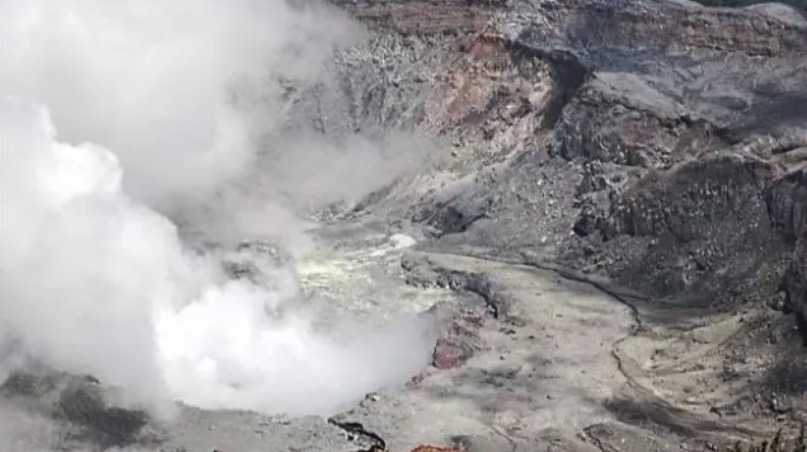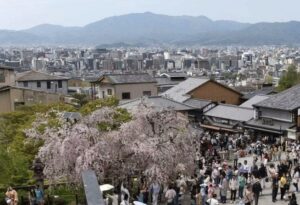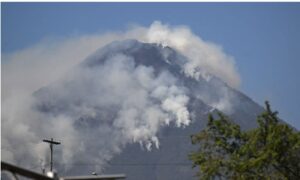On April 2, the Poás Volcano, located about 50 kilometers northwest of San José, the capital of Costa Rica, erupted, affecting the local residents’ lives and the growth and yield of crops such as coffee. In addition, it also led to the closure of the Poás Volcano National Park for two days.

Costa Rica is a country with many volcanoes, with a total of more than 200 volcanoes nationwide, and six of them are active volcanoes. Recently, one of the active volcanoes, the Poás Volcano, experienced the largest volcanic eruption in nearly five years. The height of the volcanic ash column reached 600-800 meters above the crater, and the volcanic ash was pervasive. According to local reports, a pilot claimed to have seen volcanic ash at an altitude of 10,000 feet (3,048 meters).
Volcanologists at the Costa Rican Volcano and Seismic Observatory said that although there were no eruptions of stones or hot materials this time, which reduced the number of casualties, the emitted volcanic ash would seriously affect the air quality near the area and cause harm to residents and crops. It is said that volcanic ash is irritating, and excessive inhalation by the human body can cause respiratory diseases, such as breathing discomfort, nausea, and headaches. In addition, since the volcanic ash emitted by the Poás Volcano is a fine dry ash containing acidic substances, compared with the wet volcanic ash, the dry ash will stay in the atmosphere for a longer time.

In addition, a large amount of volcanic ash and smoke enter the atmosphere, which will cause air pollution, and these small particles can be inhaled by crops and other plants, thereby inhibiting photosynthesis and reducing the productivity of crops. Generally speaking, volcanic ash can increase the pH value of the soil, neutralize the acidity of the soil, and increase the vitality of the soil. However, the volcanic ash of the Poás Volcano is acidic, which not only does not help, but also easily makes the soil loose and eroded by wind, resulting in soil erosion and soil loss, and ultimately it will also affect the yield of crops. Because the Poás Volcano is located in the center of the country, many coffee-producing areas in Costa Rica are also around the volcano, such as the well-known Central Valley located in the south of the volcano. Many people in the coffee industry are worried about the impact brought about by the volcanic ash.
Due to the eruption of the volcano, a strong smell of sulfuric acid and volcanic ash appeared in the nearby province of Poás Volcano. Therefore, the National Emergency Affairs Committee of Costa Rica announced an alert to nearby institutions and counties and temporarily closed the Poás Volcano National Park.
In addition, due to the influence of El Niño, Costa Rica is currently in a drought period with less rainfall and higher temperatures. According to a recent report by the Costa Rican Fire Department, 66 fires were recorded this year, 21 more than the same period last year, which affected 12,400 hectares of land in Costa Rica. Among them, 1,400 hectares of land were burned by fires, causing huge damage to people, animals, and the environment, especially in Guanacaste Province.
The occurrence of many fires is not only affected by drought and high temperatures, but also by factors and behaviors such as burning peppers, poaching, and using fire to reclaim land. In addition, because Costa Rica’s tourism industry is well-developed, bonfire activities carried out by many tourists during travel have also increased the risk of fires.
Although production may be damaged due to disasters, industries such as coffee are still full of expectations for the future. Among them, Costa Rica is famous for its volcanic soil and high-altitude cultivation, making Costa Rican coffee renowned in the world. According to data released by the Central Bank of Costa Rica, in 2023, Costa Rica’s bilateral trade in goods with China exceeded $4 billion for the first time. Among them, Costa Rica’s exports to China were $458 million, an increase of 17.5% year-on-year. With the increasing demand in the Chinese coffee market, the export of coffee and other products is expected to increase in the future.




















+ There are no comments
Add yours